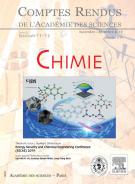Contributions of organic electrosynthesis to green chemistry - 03/08/11
| pages | 21 |
| Iconographies | 51 |
| Vidéos | 0 |
| Autres | 0 |
Abstract |
In organic electrosynthesis C–C bond formation and functional group interconversion proceed via reactive intermediates that are generated by electron transfer at the anode and cathode. Electron transfer combined with a chemical reaction provides conversions that are not available in non-electrochemical reactions. These are potential selectivity, redox-umpolung, and the substitution of a hydrogen atom for a nucleophile or the addition of two nucleophiles to a double bond in one-pot reactions. Furthermore electrolysis is well suited for oxidation and reduction of functional groups. Electrochemical syntheses need mostly fewer steps, produce less waste, provide a cheaper reagent, require less auxiliaries and allow often an easier scale-up than non-electrochemical syntheses. In addition, they can be conducted at ambient temperature and pressure. All these qualities agree well with the rules of green chemistry. This statement is substantiated with examples of C–C bond formation and functional group interconversion at the anode and cathode.
Le texte complet de cet article est disponible en PDF.Keywords : Green chemistry, Organic electrosynthesis, Reactive intermediates, C–C coupling, Functional group interconversion, Umpolung, Radicals
Plan
Vol 14 - N° 7-8
P. 745-765 - juillet 2011 Retour au numéroBienvenue sur EM-consulte, la référence des professionnels de santé.
L’accès au texte intégral de cet article nécessite un abonnement.
Bienvenue sur EM-consulte, la référence des professionnels de santé.
L’achat d’article à l’unité est indisponible à l’heure actuelle.
Déjà abonné à cette revue ?


